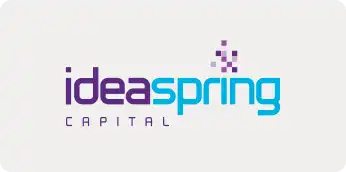The biggest challenge for a startup founder is hiring because your company is only as good as the people building it.
Since the size of the teams at startups is relatively small, any addition to your talent pool can potentially drive growth in the company or simply disrupt it. But that isn’t entirely the challenge when it comes to hiring.
It is one thing to find the right people for your startup. It’s a whole other thing to find the right people who understand unconventional compensation structure like ESOPs, and are willing to take the risk of joining an unproven business.
Don’t get me wrong. Startups are a great place to work. Think about the steep learning curve, the work culture, and the rush and joy of building something from scratch. It’s exciting and there is no substitute for that kind of experience. However, as a founder, I have faced this challenge at both Zarget and SuperOps.ai.
When it comes to hiring for a startup, the interview is a two-way process. The founder has to pitch the growth, the scope, and the opportunities that the company presents, to the interviewee. One of the questions that most founders struggle to answer is around startup compensation structures which involves ESOPs.
“Why should I accept an offer with ESOPs when there are well-established companies offering similar or more assured compensation in cash?”
I wouldn’t blame the interviewee. It’s a fair question because people in an emerging ecosystem like ours are less aware of the potential of stock options. If the founder answers this question appropriately, (s)he will have hired great talent. If not, (s)he loses a prospective hire.
Simply put, a job offer that comes packed with ESOPs is a great opportunity. I can share oodles of wisdom on why it is so. But I think it’s best you hear it from the expert — Vaidhyanathan, Director Finance at Zuora.
In this three-part interview, Vaidhy and I will discuss what ESOP is all about. Founders who are just starting out or looking to hire talent can use this as a playbook to educate uninitiated candidates on ESOP.
First things first. What are ESOPs?
ESOP is the abbreviation for Employee Stock Option Plan. These are stock options that companies give their employees as part of their compensation. You can exercise the ESOP after the vesting period, by paying the strike price and acquiring its equivalent in shares.
(I know that look! We promised to make it easy to understand ESOP and here we are throwing jargon at you.)
Let’s tackle a few terms you are bound to hear often, with the help of an example. Most of what we discuss here will apply to companies headquartered in the US, India, or Singapore unless it is specifically called out.
A company headquartered in the US with employees in India offers you an ESOP. They offer you 1000 units of stock at 1 USD exercise price each with a 4-year vesting period and a 1-year cliff. This means your employer is offering you the option to buy 1000 units of shares of the company at 1 USD provided you meet a few predefined terms and conditions.
What is an exercise price?
An exercise price is a price at which you can buy the shares in the future irrespective of what the true price of the share may be at any given point. At the time of offering the shares, the price was 1 USD. But after 4 years, even if the price of each share is 100 USD, you will only pay 1 USD to buy a share.
And this my friend, is the upside of the ESOPs.
What about vesting; what does it mean?
Vesting is essentially your right to buy company stocks provided you complete a certain number of years with the company. Usually, the vesting period is four years. This means you need to be an employee of the company for four years if you wish to buy all of those 100 shares.
And cliff?
The purpose of a cliff is to ensure that the employee stays longer with the company. The cliff is the duration of your stay with the company that qualifies you to receive the first part of your vesting. In the above-mentioned example, the cliff is 1 year. You need to be employed in the company for a year before you can get 25% of the shares. If you leave the organization after 11 months, you will get nothing.
Since we are on the topic of vesting and cliff, a ‘vesting schedule’ is a related term that you need to be aware of.
A vesting schedule lays out how your shares will be vested to you over the 4-year period. Commonly, the vesting schedule allows you to vest 25% of the shares every year with a 1-year cliff.
Are there exceptions to the rule?
Of course.
Now some companies follow a slightly different vesting mechanism. They may focus more on the second half of the vesting period instead of the first. For example, Amazon in the US follows a 5:15:40:40 vesting schedule. The employee gets 5% of the stock units for the first year, 15% for the second, 40% for the third and fourth years each. This again is a way to reward employees who stay longer with the organization.
You might also want to know whether the company has a monthly, quarterly, or half-yearly vesting after the cliff. Under monthly vesting, 1/48th of the shares are vested to you every month of your stay with the company. If you stay for 14 months, approximately 291 (1000*14/48) of the 1000 shares will be vested to you.
Under quarterly or half-yearly vesting, the vesting happens quarterly or half-yearly respectively. And should you decide to leave, you will be eligible to buy only those shares that were vested to you till the last quarter or half-year.
Another important thing we want to draw your attention to is the word ‘option’ in ESOP. This means as an employee you can choose to (or not to) buy the stocks in the future. If the company does well, you can buy the stocks. If it doesn’t, you lose nothing except the opportunity cost of working elsewhere.
Okay, so there’s the exercise price, vesting period, and cliff. Tell me, how do I benefit from ESOPs.
Surely, you must have heard stories of people who joined early-stage startups and became millionaires? Such success stories are aplenty. But there are many more stories of failure too.
With ESOPs, you can buy the shares of the company at the end of the vesting period or when you leave the company. The biggest benefit for an employee is the price that is determined at the time of granting the ESOP.
“If the company does well, the share prices will go up multiple times while the agreed price is much lower. You stand to make a huge profit. You don’t have to buy the shares if the company doesn’t do well. You stand to lose nothing.”
The general rule of thumb is 10 percent of startups succeed while the rest fail to scale. It’s sort of a gamble. If the startup succeeds, the value it creates for you is phenomenal. If it fails, you’d lose the years you worked there but gain experience.
“Given a choice, I’d choose stocks over cash. I still kick myself for not negotiating better in the earlier opportunities.”
Before you decide to join the startup, you need to consider the startup’s chance of succeeding, the founder’s record of building and scaling the business, and the strength of the investors. While personally, we would opt for more stock than cash, you need to decide what works for you.
“You need to exercise due diligence on the founder, the business model, and the viability of the company.”
Can I sell my shares?
Yes, you can sell your shares. But before we get into that, let’s first discuss how you can buy them.
You can buy the vested shares, provided the company allows you to buy all or a part of the vested shares while you are still employed with the company. A lot of companies don’t allow you to do that. It’s important that you get as much information as possible from your employer before joining the company.
Then, what’s the point of opting for ESOPs over cash?
That’s a million-dollar question.
Once you buy the shares, you own them. But there is a good chance that you won’t be able to sell them that easily. The shares you have received are ‘illiquid’.
“As the start-up grows the shares will increase in value but without a market to sell.”
There are four ways you can make money off ESOP.
1. Secondaries
At the time of a funding round, the investors will buy a small portion of the vested common shares from founders and early employees. This is done to give them a partial exit and keep them motivated to scale the organization. The recent stories of secondaries in Razorpay, Zerodha, Paytm, and Ola are encouraging signs for employees.
2. Acquisition
When the company gets acquired, the purchasing company will try to buy all the shares of the company for cash or in an exchange of their stock. There are exceptions to this. For example, when Walmart acquired Flipkart, it bought the shares of Flipkart’s founders and shares worth $100 million from employees.
3. IPO
When the company lists itself in the stock exchange to sell its shares to the general public, you can sell your shares too. However, there will be a cooling down period for the employees and founders for 6 months. This means you need to wait for six months from the time the company goes public before you can start selling your shares.
“Since it usually takes at least 10–12 years for a startup to scale and go public, you need to be prepared for the long haul.”
4. ESOP Trust
Companies that are growing at scale setup ESOP Trusts. This enables them to delay going IPO as much as possible because they want to grow furthermore before hitting the public markets. Companies such as Uber, Airbnb, and Stripe are a few notable examples.
The ESOP Trust helps companies manage their ESOP plan, the distribution of share options by working with the compensation committee. If you want, you can sell a part of your stock units to them at the current 409A price (which we’ll discuss in part two of this series). This allows you scope for liquidity.
But there’s a catch. The 409A price is much less than the price at the time of the last round of funding. Hence your profit margin too will be relatively less.
Let’s say I own shares at the company I am working for. I decide to leave. What happens to my shares?
Generally, you have 90 days to buy the vested shares. Once you buy them, your shares will remain with you until the company goes IPO, secures a round of funding, or gets acquired. If you don’t do so, all your vested share units will lapse. There will be nothing you can do about it.
There’s a catch here as well. Just like your favorite jar of peanut butter, your stock units have a shelf life which is usually 10 years from the date of purchase. If you buy the shares but the company doesn’t go public, secures the next round of funding, or gets acquired, your purchase options will expire. But most companies that are doing well get approval from the board to push the expiry by another year.
Let’s quickly recap what we’ve covered so far:
- An ESOP is a compensation structure that startups adopt to find and retain great talent. It works as a great motivator for the startup and the employee. When you affect an ESOP offer, remember you are signing up for the long haul. The longer you stay, the higher the benefits you reap.
- There are various clauses in an ESOP. It is important that you understand what you are signing up for. Don’t shy away from asking your employer questions about what the ESOP looks like for you. They will be happy to answer them for you.
- It’s partly a gamble because you are investing your time in the company in exchange for a share(s) in the company. If the company grows, the value of your shares grows. If it doesn’t, then you lose nothing except for the years you spent with the company.
In the upcoming blog posts, we’ll cover a few other aspects of ESOPs such as 409A, planning for ESOP, valuation, tax implications, and the like. Meanwhile, if you have any burning questions about ESOP, drop them as comments here and we’ll answer them.

























